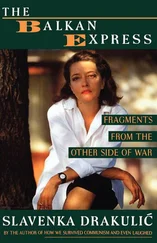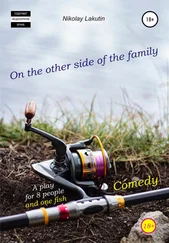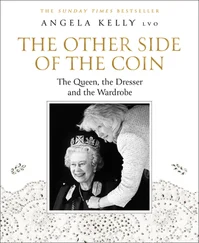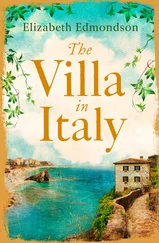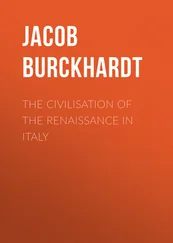It is in the south that Trento is located, which at that time, being a part of the Austrian Empire, was called Trient. The absolute majority of its population was Italian, and the irredentist movement for the incorporation of Trient and other Italian-populated border territories to Italy quickly gained momentum. As early as in 1886, people there had already started talking about making a monument to Dante Alighieri, at that time – simply on the occasion of setting up Pro Patria Foundation in Rovereto. Decorating the square in Bolzano (Bozen) with the figure of Walther von der Vogelweide, a man known for loving German culture and glorifying it throughout his life in his works, was a kind of remote response to the unrest in the south of the Austrian Empire.
The reaction of Trient (Trento) to the monument to Walther was not long in coming: already in 1893, the foundation stone of the monument to Dante was laid with an inscription on it: “The foundation stone to the monument from Trento citizens to Dante Alighieri, who showed what our language is capable of. XX APR MDCCCXCIII.” The Austro-Hungarian monarchy was well aware of the possible consequences of what was happening, but did not consider it appropriate to stand up against the project. Dante Alighieri’s figure was clearly facing north.
After World War I, under the Treaty of Saint-Germain, South Tyrol was returned to Italy. The notorious forced Italianization of this territory which followed had its impact both on the square and on the monument to Walther von der Vogelweide. First, in 1925, Walther Square was simply renamed in honour of the Italian king Victor Emmanuel III, and then, in 1935, the Fascist government that came to power in the country got around to the statue of the Minnesang poet. The monument of Walther von der Vogelweide was moved to Peter Rosegger Park. Ettore Tolomei, who headed the process of the Italianization of South Tyrolean population, insisted on erecting in its place a monument to Drusus the Elder, the Roman commander who in the 15 thcentury BC fought on the territory of Raetia against the bandits raiding Roman tribes and receiving support from the local tribes. Drusus the Elder then destroyed both the bandits and the local tribes. There’s no need to mention that Tyrol at that time had also been part of Raetia, and Tolomei was not simply referring to ancient history.
In the end, they did commission South Tyrolean sculptor Hans Piffrader to make a statue of Drusus the Elder, but, for unknown reasons, it was never made.
With the end of World War II, in 1945, the main square of Bolzano (Bozen) was renamed again, this time to Marienplatz. It bore this name until 1947, when it was changed to Waltherplatz, or Walther Square. The statue of the same name was moved to its place only in 1981.
Nowadays, the main square of the South Tyrolean capital is known as the “drawing room” of Bolzano (Bozen). At any time of the year, the cafes and bars around it are filled with locals and visitors to the region. It is home to the most famous Christmas market in Italy and the equally famous flower festival. Walther Square is then renamed (this time only jokingly) Waltz Square (Walzer Platz instead of Waltherplatz), and dancing parties are arranged here.
Cities, the main squares of which can boast a monument to a poet, are a rarity; however, the reasons for putting up such monuments are often far from poetic. The figures of Walther von der Vogelweide and Dante Alighieri symbolized the silent confrontation of two worlds speaking different languages within one country. Now, when they are once again part of the same, though completely different, country, neither the north nor the south recall the past of these two monuments. They understand that the future depends on respecting each other’s cultures.

Chapter Three.
Grüss Dich!
The landscape outside the car window is constantly changing, and the chances are good that I will make the word “beauty” the refrain of my narrative if I start describing everything that I see. Every now and then I can glimpse signs bearing the names of hotels and guest houses, most of which necessarily contain, modified in one way or another, the words Edelweiss , Alpin (“Alpine”), Weissen Rössl (“White Horse”) (to be quite fair, I must say that sometimes the horse is of some other colour), Panorama and Mondschein (“Moonlight”). In the same way as in the Soviet Union each city had its own Lenin Street, in South Tyrol you will always come across the good old rössl (“horse”).
If you have got lost, you can stop your car and ask the locals for directions – they will help you, but only after saying Grüss Gott or Grüss dich (“Hello” in the local dialect). After that, you can continue your way to see another signboard of a hotel bearing the name Post , which is also very popular in the region.
South Tyrol is The Other Italy.
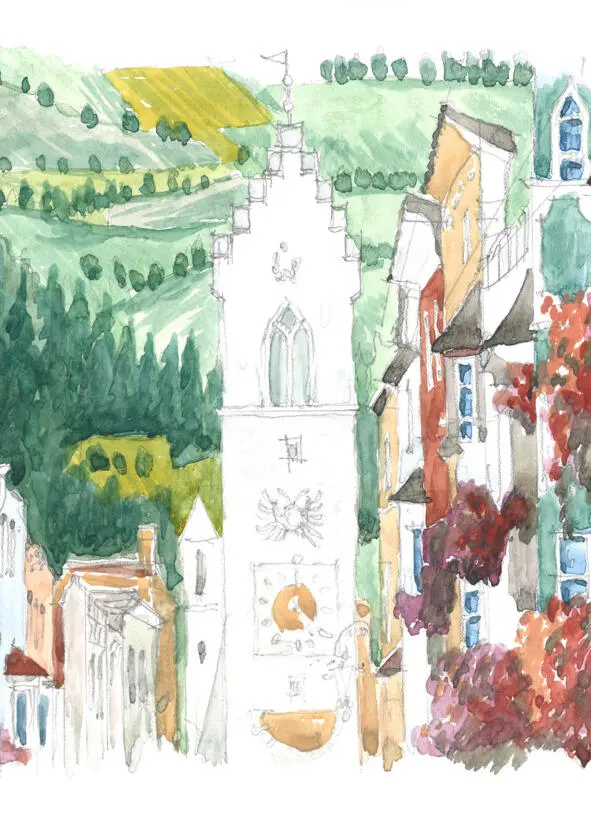
Chapter Four.
We Are in Italy, Are We?
Vipiteno (Sterzing) is a fairy-tale South Tyrolean town in which you want to use a diminutive name for absolutely everything. It is so charming in late spring that I don’t even dare to think of it at Christmas season, when it must be covered with an even layer of soft fluffy snow, decorated with ornaments and strings of lights, permeated with the smells of fresh gingerbread, hot chocolate, roasted chestnuts and fruit punch. I can’t but think: what would it be like, to be born here? It would probably be great to wake up and run to the window to see the snow-capped peaks, the Zwölferturm tower – the symbol of the city – and the conventional boundary between its “new” and “old” parts, and to smell the perfect aroma of fresh buns coming up from the cosy family coffee shop – there would simply have to be one on the ground floor. This is my first visit to Vipiteno (Sterzing), though I’ve known about its existence for a long time.
The fact is that I love to start my day with a delicious breakfast, an integral part of which has always been yoghurt. While studying in Milan, I found out “by trial and error” in the literal sense of the word that the best product of all the variety presented in the stores is the one in minimalist packaging with a coat of arms and the inscription “Sterzing-Vipiteno.” Needless to say, I was in advance disposed more than favourably towards this South Tyrolean city, considering rightfully that only a good place and good people can produce such a high-quality, wholesome and tasty product.
Of course, in addition to yoghurt, which is produced by a company founded in the times when South Tyrol was part of the Austro-Hungarian Empire, in Vipiteno (Sterzing) you can and should pamper yourself with traditional speck, smoked sausages, all kinds of knodels and fragrant strudel with apple, apricot or cottage cheese. It would be a crime to just walk past hand-made chocolates laid out in the windows of pastry shops and the freshest Sacher cake with homemade whipped cream.
In this town you must go by your senses and be sure to enjoy not only the beauty around, but also the local cuisine. At the time I found myself in the town, my knowledge of German was poor; sitting down at a table in a restaurant and finding that the menu was only in German, I asked the waiter to bring it in Italian, adding with a smile: “We’re in Italy, are we?” The local citizens, who were watching the scene closely, literally collapsed with laughter.
Читать дальше



